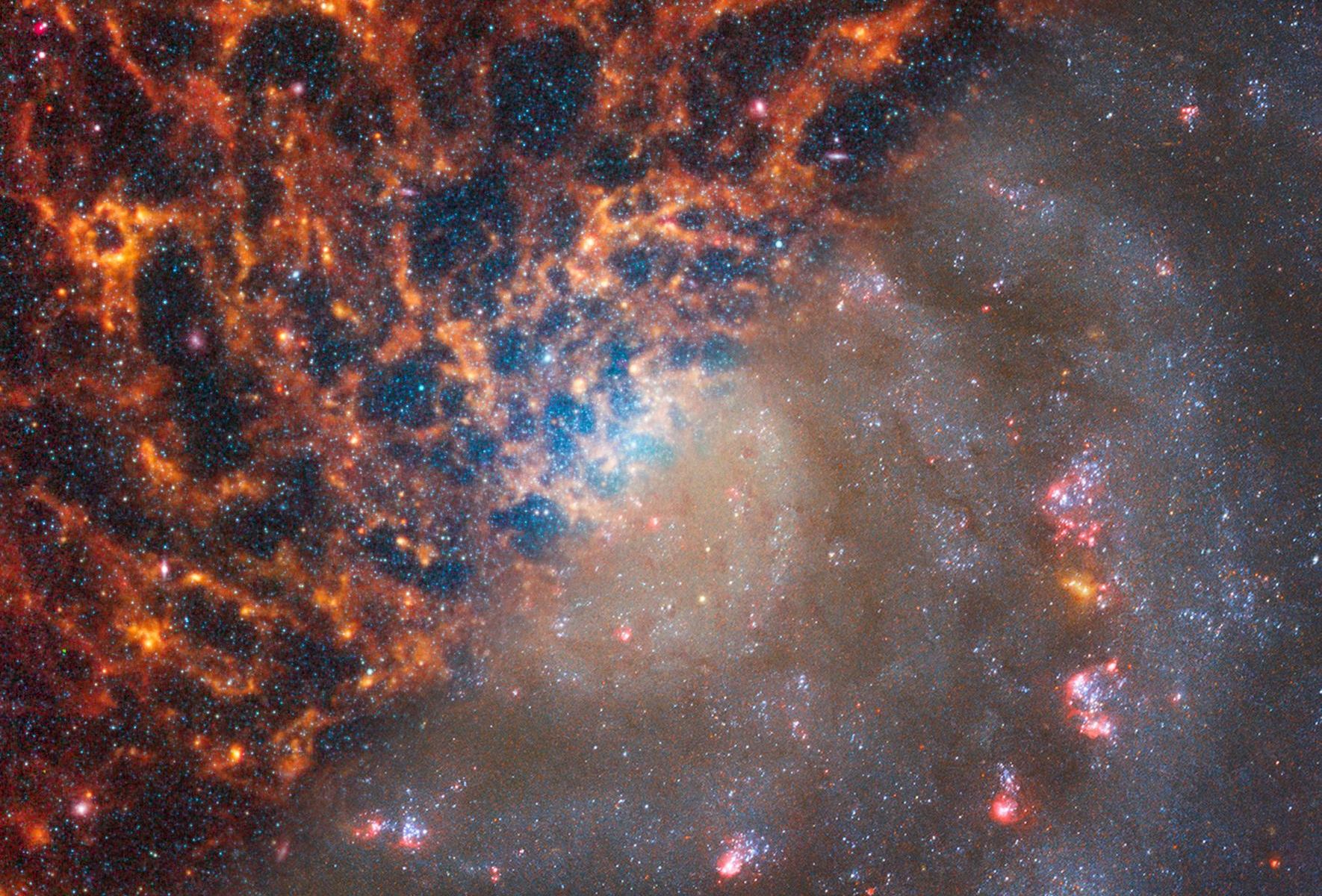The James Webb Space Telescope (JWST) continues to make amazing discoveries. This time in the constellation of Pictor where, in the Beta Pictoris system a massive collision of asteroids. The system is young and only just beginning its evolutionary journey with planets only now starting to form. Just recently, observations from JWST have shown significant energy changes emitted by dust grains in the system compared to observations made 20 years ago. Dust production was thought to be ongoing but the results showed the data captured 20 years ago may have been a one-off event that has since faded suggesting perhaps, an asteroid strike!
Continue reading “Webb Sees Asteroids Collide in Another Star System”Nancy Grace Roman will Map the Far Side of the Milky Way
The Galaxy is a collection of stars, planets, gas clouds and to the dismay of astronomers, dust clouds. The dust blocks starlight from penetrating so it’s very difficult to learn about the far side of the Galaxy. Thankfully the upcoming Nancy Grace Roman telescope has infrared capability so it can see through the dust. A systematic survey of the far side of the Milky Way is planned to see what’s there and could discover billions of objects in just a month.
Continue reading “Nancy Grace Roman will Map the Far Side of the Milky Way”Astronomers See the Wreckage Where Planets Crashed Into Each Other in a Distant Star System
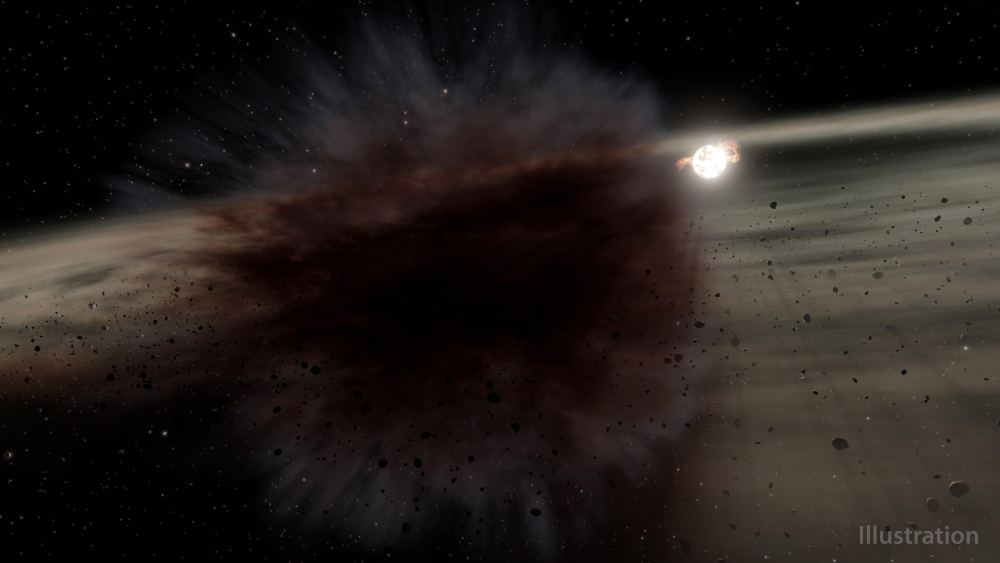
Our Solar System was born in chaos. Collisions shaped and built the Earth and the other planets, and even delivered the building blocks of life. Without things smashing into each other, we might not be here.
Thankfully, most of the collisions are in the past, and now our Solar System is a relatively calm place. But frequent collisions still occur in other younger solar systems, and astronomers can see the aftermath.
Continue reading “Astronomers See the Wreckage Where Planets Crashed Into Each Other in a Distant Star System”It Turns out There Were Supernovae Exploding all Over, we Just Couldn’t see Them
When the poet Horace said “We are but dust and shadow”, he probably didn’t think that dust itself could create a shadow. But it can, and that shadow can obscure even some of the most powerful explosions in the universe. At least that’s the finding from new research from an international team using data from the recently retired Spitzer telescope. It turns out dust in far away galaxies can obscure supernovas.
Continue reading “It Turns out There Were Supernovae Exploding all Over, we Just Couldn’t see Them”Citizen Scientists Discover a new Feature in Star Formation: “Yellowballs”
AI is often touted as being particularly good at finding patterns amongst reams of data. But humans also are extremely good at pattern recognition, especially when it comes to visual images. Citizen science efforts around the globe leverage this fact, and recent results released from the Milky Way Project on Zooinverse show how effective it can be. The project’s volunteer team identified 6,176 “yellowballs”, which are a stage that star clusters go through during their early years. That discovery helps scientists better understand the formation of these clusters and how they eventually grow into individualized stars.
Continue reading “Citizen Scientists Discover a new Feature in Star Formation: “Yellowballs””Do Comets Explain Mystery Star’s Bizarre Behavior?
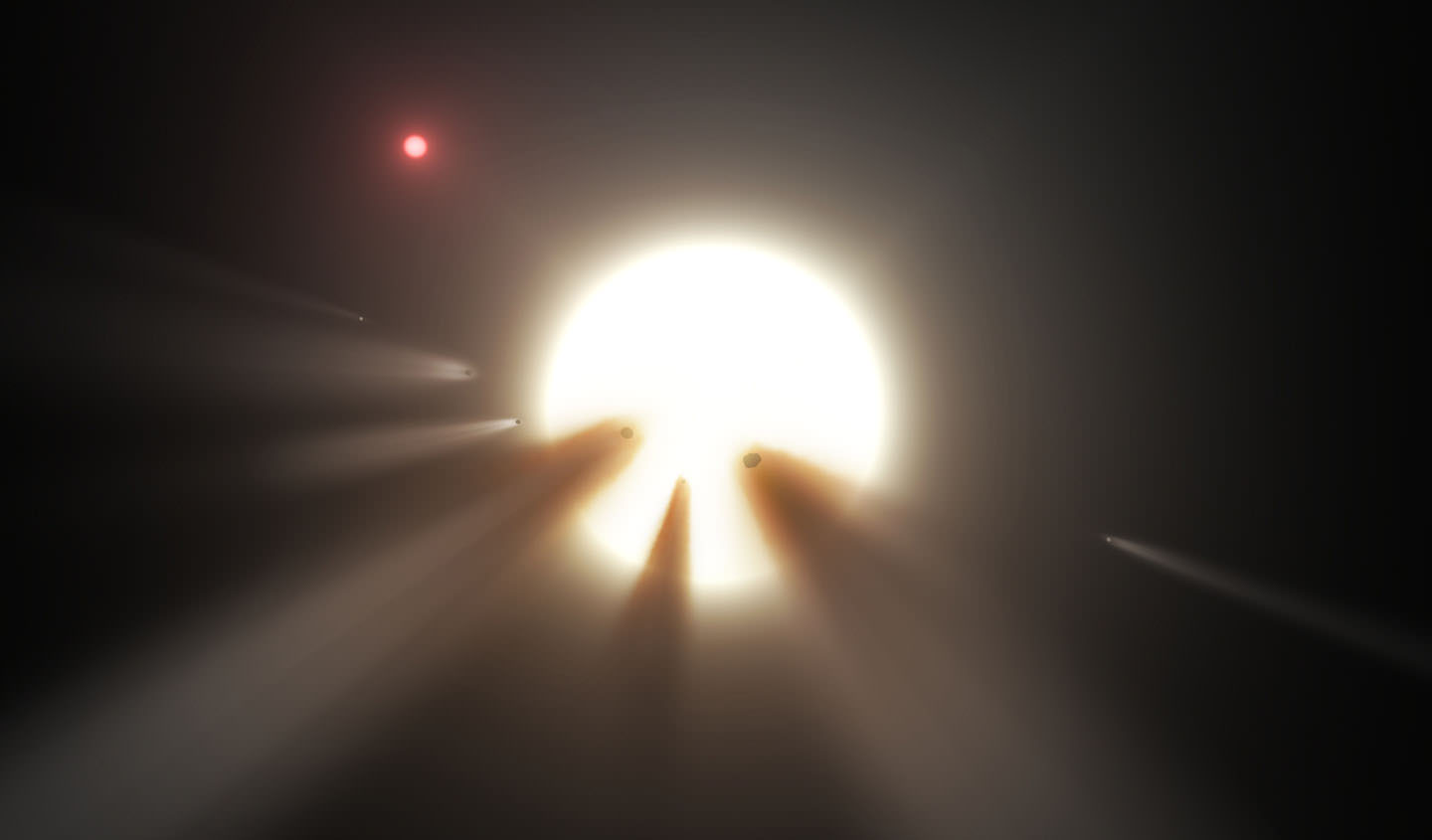
The story of KIC 8462852 appears far from over. You’ll recall NASA’s Kepler mission had monitored the star for four years, observing two unusual incidents, in 2011 and 2013, when its light dimmed in dramatic, never-before-seen ways. Models to explain its erratic behavior were so lacking that some considered the possibility that alien megastructures built to capture sunlight around the host star (think Dyson Spheres) might be the cause.
But a search using the SETI Institute’s Allen Telescope Array for two weeks in October detected no significant radio signals or other signs of intelligent life emanating from the star’s vicinity. Something had passed in front of the star and blocked its light, but what?

Shattered comets and asteroids were also suggested as possible explanations — dust and ground-up rock would be at the right temperature to glow in the infrared — but Kepler could only observe in visible light where any debris would be invisible or swamped by the light of the star. So researchers looked through older observations made in 2010 by the Wide Field Infrared Survey Explorer (WISE) space telescope. Unfortunately, WISE observed the star before the strange variations were seen and therefore before any putative dust-busting collisions.
Not to be stymied, astronomers next checked out the data from NASA’s Spitzer Space Telescope, which like WISE, is optimized for infrared light. Spitzer just happened to observe KIC 8462852 much more recently in 2015.
“Spitzer has observed all of the hundreds of thousands of stars where Kepler hunted for planets, in the hope of finding infrared emission from circumstellar dust,” said Michael Werner, the Spitzer project scientist and the lead investigator of that particular Spitzer/Kepler observing program.
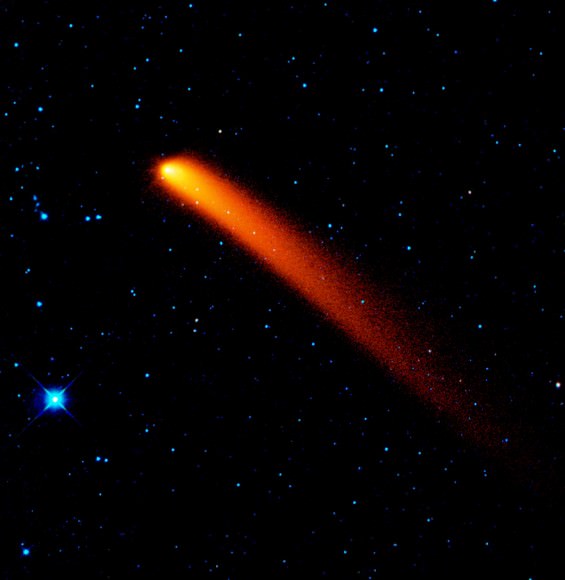
I’d love to report that Spitzer tracked down glowing dust but no, it also came up empty-handed. This makes the idea of an asteroidal smash-up very unlikely, but not one involving comets according to Massimo Marengo of Iowa State University (Ames) who led the new study. Marengo proposes that cold comets are responsible. Picture a family of comets traveling on a very long, eccentric orbit around the star with a very large comet at the head of the pack responsible for the big fading seen by Kepler in 2011. Later, in 2013, the rest of the comet family, a band of various-sized fragments lagging behind, would have passed in front of the star and again blocked its light. By 2015, the comets would have moved even farther away on their long orbital journey, leaving no detectable infrared excess.
“This is a very strange star,” said Marengo. “It reminds me of when we first discovered pulsars. They were emitting odd signals nobody had ever seen before, and the first one discovered was named LGM-1 after ‘Little Green Men.'”
Clearly, more long-term observations are needed. And frankly, I’m still puzzled why cold or less active comets might still not be detected by their glowing dust. But let’s assume for a moment the the comet idea is correct. If so, we should expect to see similar dips in KIC 8462852’s light as the comet swarm swings around again.
Weekly Space Hangout – April 17, 2015: Amy Shira Teitel and “Breaking the Chains of Gravity”
Host: Fraser Cain (@fcain)
Special Guest: Amy Shira Teitel (@astVintageSpace) discussing space history and her new book Breaking the Chains of Gravity
Guests:
Morgan Rehnberg (cosmicchatter.org / @MorganRehnberg )
This Week’s Stories:
Falcon 9 launch and (almost!) landing
NASA Invites ESA to Build Europa Piggyback Probe
Bouncing Philae Reveals Comet is Not Magnetised
Astronomers Watch Starbirth in Real Time
SpaceX Conducts Tanking Test on In-Flight Abort Falcon 9
Rosetta Team Completely Rethinking Comet Close Encounter Strategy
Apollo 13 Custom LEGO Minifigures Mark Mission’s 45th Anniversary
LEGO Launching Awesome Spaceport Shuttle Sets in August
New Horizons Closes in on Pluto
Work Platform to be Installed in the Vehicle Assembly Building at NASA’s Kennedy Space Center in Florida.
Watching the Sunsets of Mars Through Robot Eyes: Photos
NASA Invites ESA to Build Europa Piggyback Probe
ULA Plans to Introduce New Rocket One Piece at a Time
Two Mysterious Bright Spots on Dwarf Planet Ceres Are Not Alike
18 Image Montage Show Off Comet 67/P Activity
ULA’s Next Rocket To Be Named Vulcan
NASA Posts Huge Library of Space Sounds And You’re Free to Use Them
Explaining the Great 2011 Saturn Storm
Liquid Salt Water May Exist on Mars
Color Map Suggests a Once-Active Ceres
Diverse Destinations Considered for New Interplanetary Probe
Paul Allen Asserts Rights to “Vulcan” Trademark, Challenging Name of New Rocket
First New Horizons Color Picture of Pluto and Charon
NASA’s Spitzer Spots Planet Deep Within Our Galaxy
Icy Tendrils Reaching into Saturn Ring Traced to Their Source
First Signs of Self-Interacting Dark Matter?
Anomaly Delays Launch of THOR 7 and SICRAL 2
Nearby Exoplanet’s Hellish Atmosphere Measured
The Universe Isn’t Accelerating As Fast As We Thought
Glitter Cloud May Serve As Space Mirror
Cassini Spots the Sombrero Galaxy from Saturn
EM-1 Orion Crew Module Set for First Weld Milestone in May
Special Delivery: NASA Marshall Receives 3D-Printed Tools from Space
The Roomba for Lawns is Really Pissing Off Astronomers
Giant Galaxies Die from the Inside Out
ALMA Reveals Intense Magnetic Field Close to Supermassive Black Hole
Dawn Glimpses Ceres’ North Pole
Lapcat A2 Concept Sup-Orbital Spaceplane SABRE Engine Passed Feasibility Test by USAF Research Lab
50 Years Since the First Full Saturn V Test Fire
ULA CEO Outlines BE-4 Engine Reuse Economic Case
Certification Process Begins for Vulcan to Carry Military Payloads
Major Advance in Artificial Photosynthesis Poses Win/Win for the Environment
45th Anniversary [TODAY] of Apollo 13’s Safe Return to Earth
Hubble’s Having A Party in Washington Next Week (25th Anniversary of Hubble)
Don’t forget, the Cosmoquest Hangoutathon is coming soon!
We record the Weekly Space Hangout every Friday at 12:00 pm Pacific / 3:00 pm Eastern. You can watch us live on Google+, Universe Today, or the Universe Today YouTube page.
You can join in the discussion between episodes over at our Weekly Space Hangout Crew group in G+, and suggest your ideas for stories we can discuss each week!
Astronomy Cast Ep. 367: Spitzer does Exoplanets
We’ve spent the last few weeks talking about different ways astronomers are searching for exoplanets. But now we reach the most exciting part of this story: actually imaging these planets directly. Today we’re going to talk about the work NASA’s Spitzer Space Telescope has done viewing the atmospheres of distant planets.
Continue reading “Astronomy Cast Ep. 367: Spitzer does Exoplanets”
360 Degrees of Milky Way at Your Fingertips
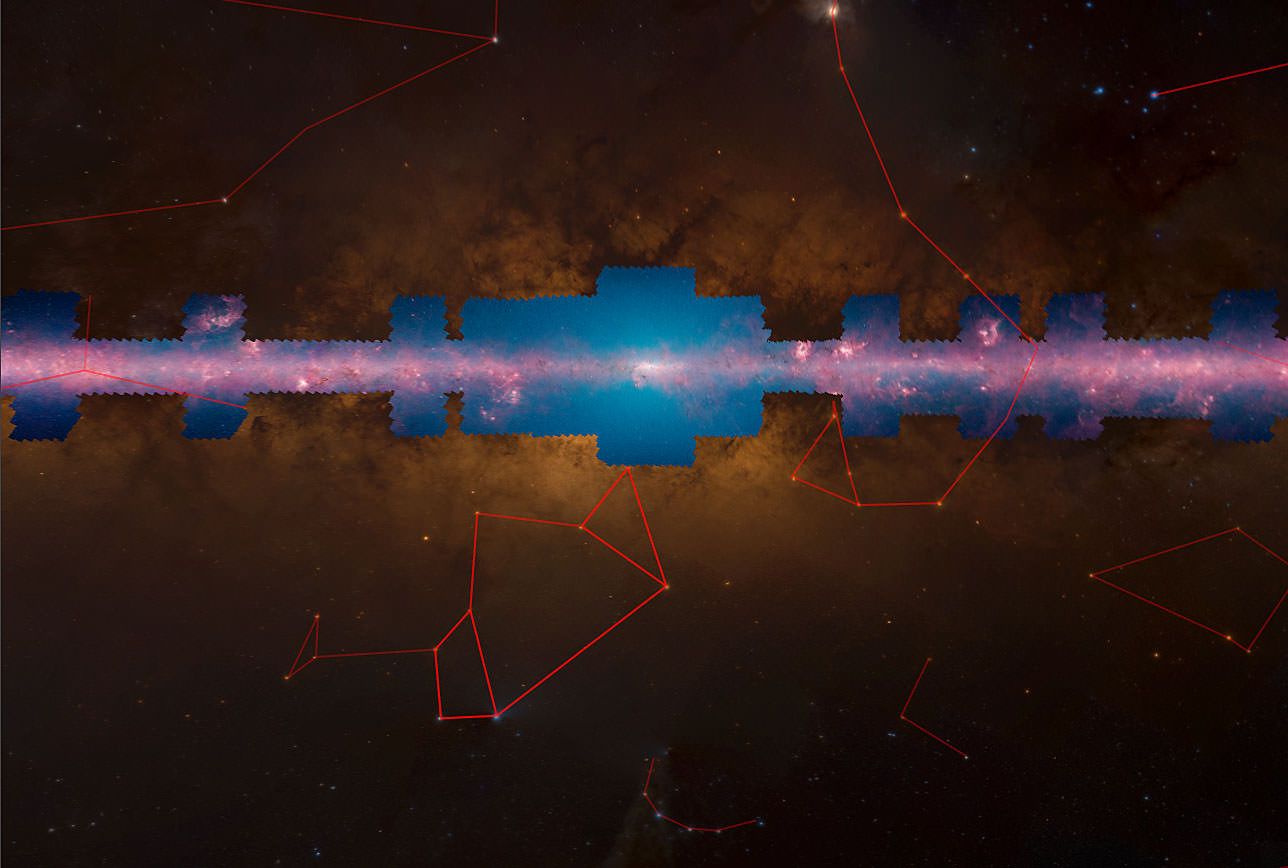
Touring the Milky Way’s a blast with this brand new 360-degree interactive panorama. More than 2 million infrared photos taken by NASA’s Spitzer Space Telescope were jigsawed into a 20-gigapixel click-and-zoom mosaic that takes the viewer from tangled nebulae to stellar jets to blast bubbles around supergiant stars.
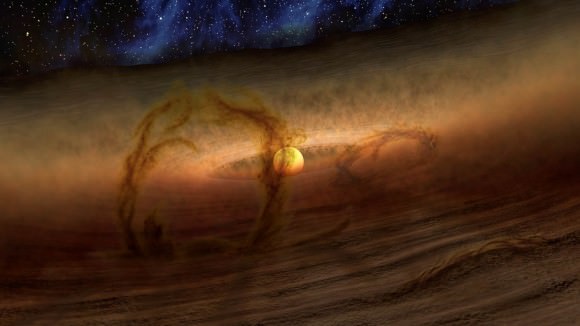
The new composite, using infrared images taken over the past decade, was compiled by a team led by UW-Madison astronomer Barbara Whitney and unveiled at a TEDactive conference in Vancouver, Canada Thursday. Unlike visual light, infrared penetrates the ubiquitous dust concentrated in the galactic plane to reveal structures otherwise obscured.
Catching a GLIMPSE of the Milky Way in this short video presentation
“For the first time, we can actually measure the large-scale structure of the galaxy using stars rather than gas,” explained Edward Churchwell, UW-Madison professor of astronomy and team co-leader. “We’ve established beyond the shadow of a doubt that our galaxy has a large bar structure that extends halfway out to the sun’s orbit. We know more about where the Milky Way’s spiral arms are.”
Named GLIMPSE360 (Galactic Legacy Mid-Plane Survey Extraordinaire project), the deep infrared survey captures only about 3% of the sky, but because it focuses on the plane of the Milky Way, where stars are most highly concentrated, it shows more than half of all the galaxy’s 300 billion suns.
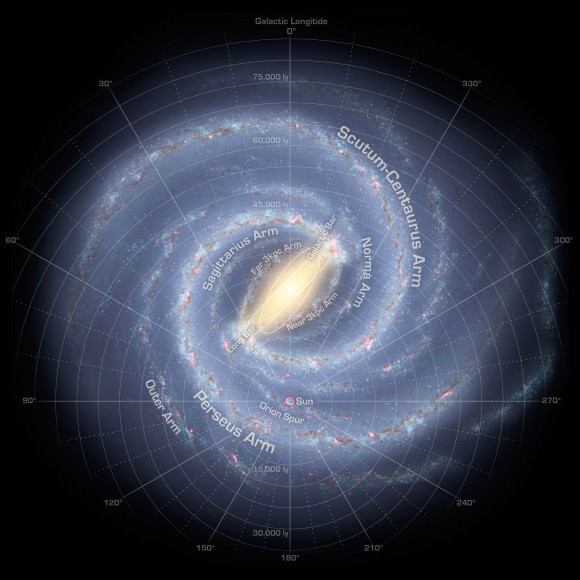
Using your imagination to hover high above the galactic plane, you’d see the Milky Way is a flat spiral galaxy sporting a stubby bar of stars crossing its central bulge. The solar system occupies a tiny niche in a minor spiral arm called the Orion Spur two-thirds of the way from the center to the edge. At 100,000 light years across, the Milky Way is vast beyond comprehension and yet it’s only one of an estimated 100 billion galaxies in the observable universe.
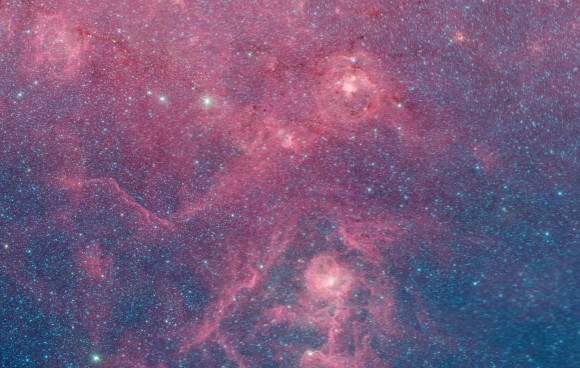
While you and I sit back and marvel at all the stellar and nebular eye candy, the Spitzer images are helping astronomers determine where the edge of the galaxy lies and location of the spiral arms. GLIMPSE images have already revealed the Milky Way to be larger than previously thought and shot through with bubbles of expanding gas and dust blown by giant stars.
Spitzer can see faint stars in the “backcountry” of our galaxy — the outer, darker regions that went largely unexplored before.
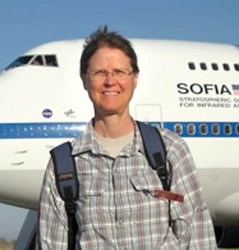
“There are a whole lot more lower-mass stars seen now with Spitzer on a large scale, allowing for a grand study,” said Whitney. “Spitzer is sensitive enough to pick these up and light up the entire ‘countryside’ with star formation.”
The new 360-degree view will also help NASA’s upcoming James Webb Space Telescope target the most interesting sites of star-formation, where it will make even more detailed infrared observations.
When you play around with the interactive mosaic, you’ll notice a few artifacts here and there among the images. Minor stuff. What took some getting used to was how strikingly different familiar nebulae appeared when viewed in infrared instead of visual light. The panorama is also available on the Aladin viewing platform which offers shortcuts to regions of interest.
Neil deGrasse Tyson, astrophysicist and host of the new Cosmos TV series, gave the third line of our “cosmic address” as the Milky Way after ‘Earth’ and ‘Solar System’. After a few minutes with GLIMPSE360 you’ll better appreciate the depth and breadth of our galactic home.
Runaway Star Shocks the Galaxy!

That might seem like a sensational headline worthy of a supermarket tabloid but, taken in context, it’s exactly what’s happening here!
The bright blue star at the center of this image is a B-type supergiant named Kappa Cassiopeiae, 4,000 light-years away. As stars in our galaxy go it’s pretty big — over 57 million kilometers wide, about 41 times the radius of the Sun. But its size isn’t what makes K Cas stand out — it’s the infrared-bright bow shock it’s creating as it speeds past its stellar neighbors at a breakneck 1,100 kilometers per second.
K Cas is what’s called a runway star. It’s traveling very fast in relation to the stars around it, possibly due to the supernova explosion of a previous nearby stellar neighbor or companion, or perhaps kicked into high gear during a close encounter with a massive object like a black hole.
As it speeds through the galaxy it creates a curved bow shock in front of it, like water rising up in front of the bow of a ship. This is the ionized glow of interstellar material compressed and heated by K Cas’ stellar wind. Although it looks like it surrounds the star pretty closely in the image above, the glowing shockwave is actually about 4 light-years out from K Cas… slightly less than the distance from the Sun to Proxima Centauri.
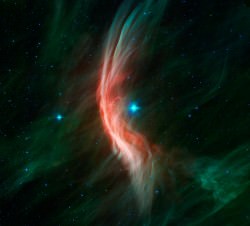
Although K Cas is visible to the naked eye, its bow shock isn’t. It’s only made apparent in infrared wavelengths, which NASA’s Spitzer Space Telescope is specifically designed to detect. Some other runaway stars have brighter bow shocks — like Zeta Ophiuchi at right — which can be seen in optical wavelengths (as long as they’re not obscured by dust, which Zeta Oph is.)
Related: Surprise! IBEX Finds No Bow ‘Shock’ Outside our Solar System
The bright wisps seen crossing K Cas’ bow shock may be magnetic filaments that run throughout the galaxy, made visible through interaction with the ionized gas. In fact bow shocks are of particular interest to astronomers precisely because they help reveal otherwise invisible features and allow deeper investigation into the chemical composition of stars and the regions of the galaxy they are traveling through. Like a speeding car on a dark country road, runaway stars’ bow shocks are — to scientists — like high-beam headlamps lighting up the space ahead.
Runaway stars are not to be confused with rogue stars, which, although also feel the need for speed, have been flung completely out of their home galaxies.
Source: NASA


